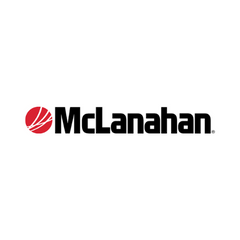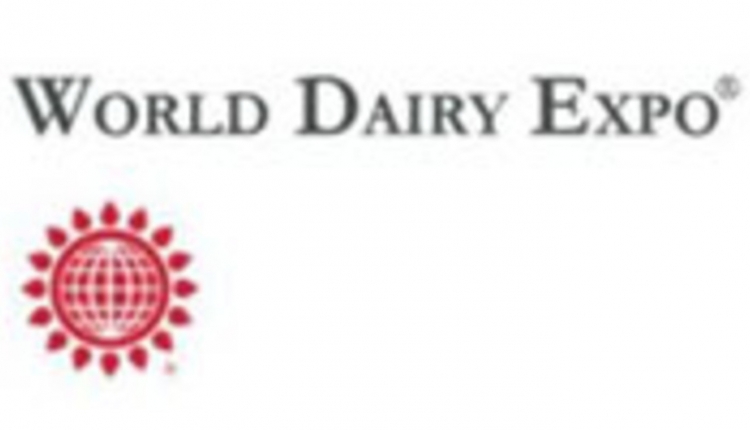The information below has been supplied by dairy marketers and other industry organizations. It has not been edited, verified or endorsed by Hoard’s Dairyman.

Cow comfort and herd health are non-negotiables for achieving higher milk quality and production. Bedding plays a critical role in both, which is why many dairy farms have long relied on sand as their go-to bedding. However, questions sometimes arise as to which is the better bedding – fresh sand or recycled sand?

“You have to be able to trust your bedding, whether it’s new or recycled,” notes Renee Schrift, Director of Global Sales — Agricultural Systems at McLanahan Corporation. “It needs to work for your cows, their health and ultimately milk quality. It all goes hand in hand.”
Dairies have options. When it comes to fresh sand versus recycled sand, research shows that properly processed recycled sand provides the same comfort and milk quality benefits as newly purchased sand, with significant cost savings and a reduced environmental footprint.
Benefits of recycled sand
Some assume recycled sand bedding is less clean, of inconsistent quality or less comfortable for cows. Others are concerned it may harbor bacteria and increase mastitis risk. These concerns are largely based on appearance. “It doesn’t look like the white beaches of the Caribbean,” says Schrift. “But, we shouldn’t judge a book by its cover.”
In reality, properly recycled sand is equal, if not better in some cases, at providing the same benefits sand bedding is known to provide.
- Cow comfort: Properly processed recycled sand retains the same make up and form as new sand. The key to comfort is in the particle size and cleanliness of the sand, not whether it is new or reused. During processing, rough debris and excessive fines are removed, thus offering the same comfort benefits as fresh sand.
- Bacteria growth: Studies show that when properly processed, recycled sand has no significant difference in bacterial counts to new sand over the week after bedding the stalls.1
- Moisture and organic matter: The optimal moisture range for bedding is 4 to 5%. Sand when properly processed, whether new or recycled, typically falls within that range. Additionally, during processing organic matter is removed from recycled sand. Depending on the quality of newly sourced sand, recycled bedding can contain fewer organic materials.
- Bedding cost: Continuously purchasing large volumes of new sand is costly, both in the material itself and its transportation. Typical sand recycling systems can recover 90% or more of the sand from manure. Often only 5 to 10% is lost to unrecoverable fine particles. This means the same sand is used again and again in stalls, with only a small fraction needing to be replaced periodically. In fact, studies found that when switching to recycled bedding, the bedding cost per unit of milk drops up to $0.30 per hundredweight of milk produced.2,3
For many dairy farms, recycled sand bedding offers a sustainable way to enjoy sand’s benefits while significantly cutting costs and mitigating manure challenges, without reducing cow health.

Challenges of new sand
New sand is often assumed to be the gold standard but may present its own challenges.
“Farmers assume new equals perfect condition because, well, it’s new. But that isn’t always the case,” explains Schrift. “Quality varies by source, from organic matter levels to particle size.”
Because new sand quality may fluctuate, routine testing for organic content, moisture levels, and particle composition is essential. Many incorrectly assume new sand is cleaner than recycled, but it can contain silts, clays, and plant debris.
High-quality sand, whether new or recycled, should include a mix of fine and coarse particle size with minimal gravel, clay or silt to ensure it remains loose and dry and provides proper traction and cushion.
It’s all in how you manage it
“What matters most is sand quality, and research continues to show that recycled sand provides the same quality as new,” notes Schrift. “Whether you are bedding with new or recycled sand comes down to the economics and logistics of your farm.”

Regardless of origin, the key to effective bedding is keeping stalls dry, removing organic matter, and ensuring clean, deep bedding for cow comfort.
With McLanahan’s advanced sand recycling systems, dairy farms can lower sand bedding costs, improve bedding consistency and reduce environmental impact while maintaining high herd health standards. Now is the time for dairy farmers to rethink their bedding strategy and consider how recycled sand can support a more efficient, profitable operation.
To learn more about sand bedding and sand separation, visit mclanahan.com/solutions/dairy.
About McLanahan
Headquartered in Hollidaysburg, Pa., USA, McLanahan Corporation offers over 185 years of experience in providing processing solutions to a variety of materials handling industries. Today, McLanahan’s operation includes offices in Asia, Australia and Asia Pacific, Europe, Latin America, MENA and North America, and it is supported by a strong network of dealers and partners around the world. For more information, contact sales@mclanahan.com.
1 Kristula, M. A., et al. (2005). Comparison of bacteria populations in clean and recycled sand used for bedding in dairy facilities. Journal of Dairy Science, 88(12), 4317–4325
2 Harrison, E. Z., Bonhotal, J., & Schwarz, M. (2008). Using manure solids as bedding. Cornell Waste Management Institute. Retrieved from https://ecommons.cornell.edu/bitstream/handle/1813/44571/beddingfinalreport.pdf.pdf?sequence=2
3 Gooch, C. A., Wedel, A., & Inglis, S. F. (2005). Manure application cost study. Cornell University. Retrieved from https://ecommons.cornell.edu/bitstreams/f62df2b0-5fe3-45ba-bff3-761e3ec6f5c8/download




